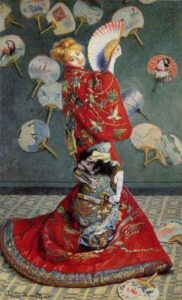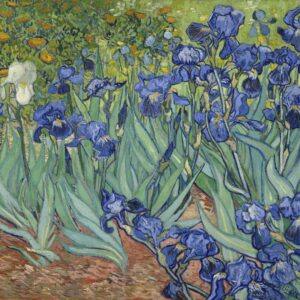Japonisme is defined as the influence of Japanese art, particularly prints and engravings, on Western art. This influence is particularly marked in post-impressionist artists such as van Gogh or Monet.
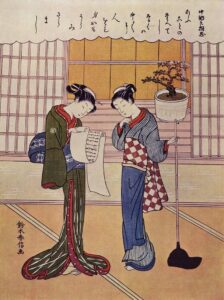
2 girls by Suzuki Harunobu
But it wasn’t a copy or reproduction of the Japanese aesthetic. Rather, it was a response to the intense search for new approaches to art by post-impressionist artists
Free e-book to download at the end of the article
Japonisme and the influence of Japanese art in Western art, particularly in the artists of Post-Impressionism.
Text - Yolanda Silva author of the online course Analysing Art
Cover image – La Japonaise, Madame Monet en costume japonais, Claude Monet (Museum of Fine Arts, Boston, USA)
What is Japonisme
Japan in the second half of the 19th century
Until the 19th century Japan remained fairly isolated from the Western World, thus closed to its influences and vice versa.
However, with the British colonization of the 19th century, the Japanese territory begins to open up to outside influences and the old Japanese social system is reformed.
In 1867, an internal revolution installed Emperor Mitsu-Hito on the throne, who proclaimed a new era – the Meiji era – determined to open up the country to external influences and changed the name of the capital from Edo to Tokyo.
Japanese art is discovered by European artists.
Between 1860 and 1870, there is an immense influx of art objects from Japan, creating a natural fascination with Japanese art and culture.
We can say that Japonisme is a kind of European reinterpretation that integrates Japanese styles into Western art objects.
What does Japonisme mean ?
Japonisme designates the exchange of influences between Japanese and European art.
Japonisme manifests itself in Western Art mainly through the simplification of colors and perspective.
However, one could not say that it was a copy of the Japanese artistic process, but rather an encounter between both cultures and artistic expressions.
This art form and previously unknown techniques fascinated the post-Impressionist artists in their search for new ideas
Japonisme – how did it influence the arts?
Japanisme has greatly influenced Western artists. Some examples:
James Tissot

Tissot – La Japonaise au Bain (1864), Musée des Beaux arts de Dijon
Claude Monet
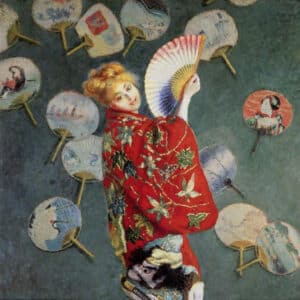
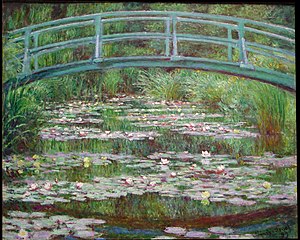
Japanese bridge, Claude Monet, 1899
Vincent van Gogh
Vincent Van Gogh was influenced by various sources, including his passion for the stylized representations of Japanese woodcuts (Ukiyo-e).
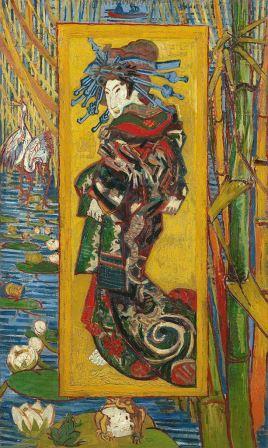
The Courtesan (1887), Vincent Van Gogh (painting based on a Japanese print; Van Gogh Museum, The Netherlands).
In “Portrait of Père Tanguy”, from 1887, Van Gogh depicts his paint supplier, Julien Tanguy, with Japanese woodcuts in the background. In fact, Van Gogh painted two versions of this portrait, both of which show Ukiyo-e by Japanese artists such as Hiroshige and Kunisada.
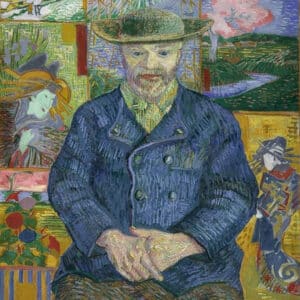
Download your Free E-book
Understanding Post Impressionist Art
In this course you will learn to know about Post Impressionist art , its origin and principles.
You will also learn how to analyze post-impressionist works with practical examples.
Among the various Post-Impressionist artists that will be analyzed, will be highlighted the works of:
Seurat, Vincent van Gogh, Paul Gauguin, Paul Cézanne, Henri Rousseau.

